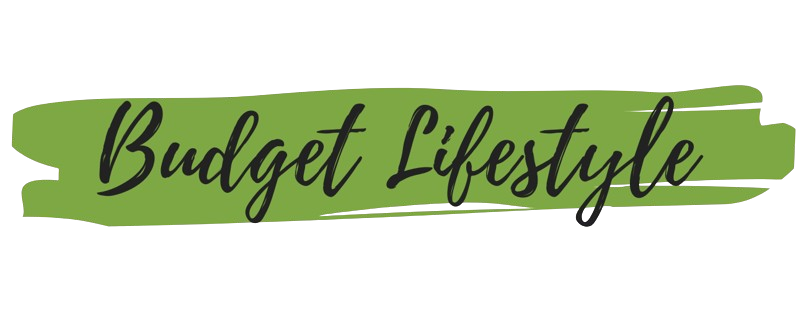Why I Needed to Declutter My Digital Life
For years, my digital life felt like an endless, chaotic space where everything kept accumulating. My email inbox had thousands of unread messages, my phone storage was constantly full, and my desktop was cluttered with random files I swore I would organize later. I had apps I never used, photos I never looked at, and notifications that pulled my attention in a hundred different directions. It felt overwhelming, but I kept ignoring it.
Like physical clutter, digital clutter has a way of creeping up slowly. I told myself that having too many files and apps wasn’t a real problem, but deep down, I knew it was affecting me. Every time I opened my laptop or phone, I felt scattered. Searching for an important document meant sifting through layers of disorganization. Trying to focus on work was a battle against constant pings and alerts. At the end of the day, I realized that my digital environment was controlling me instead of the other way around.
That was when I decided to take a step back and declutter my digital world. I wanted to regain control, create a more mindful experience, and reduce the constant noise that had become an everyday part of my life.
The Benefits of a Digital Declutter
Decluttering my digital space turned out to be more than just a practical exercise—it was a transformation. At first, I thought the only advantage would be having a cleaner inbox or a more organized desktop, but the benefits went far beyond that.
One of the first things I noticed was the reduction in stress. Without constant notifications and an overwhelming number of digital distractions, I felt more at peace. I no longer had the nagging feeling that I needed to check emails every few minutes or respond to unnecessary alerts. My mind felt clearer, and I could focus on what actually mattered.
Another unexpected benefit was improved productivity. With a structured and decluttered workspace, I found it easier to work efficiently. I wasn’t wasting time searching for lost files or being interrupted by pop-ups. Instead, I was able to dedicate my attention to tasks without digital clutter pulling me in different directions.
Most importantly, I started to develop a healthier relationship with technology. Rather than feeling chained to my devices, I started using them intentionally. I no longer felt the pressure to keep up with every email, message, or social media update. By reducing my digital footprint, I made space for more meaningful experiences, both online and offline.
How I Organize My Digital Life for a Clearer Mind
Organizing my digital life wasn’t just about deleting files and apps—it was about creating a sustainable system. I realized that if I didn’t have a structured way to maintain digital order, the clutter would slowly return. So, I created a simple, effective strategy to keep things in check.
The first step was setting up a well-organized file system. Instead of saving everything in random folders, I created clear categories for work, personal projects, important documents, and archived files. I also renamed everything in a way that made sense, so I wouldn’t have to guess what a file was about months later.
For my emails, I implemented a folder system and set up filters. Important emails now go into designated folders, and I make it a habit to delete unnecessary messages regularly. This system prevents my inbox from spiraling out of control again.
To maintain control over my digital space, I scheduled monthly maintenance sessions. At the start of each month, I take an hour to go through my files, delete what I no longer need, and reorganize anything that has become cluttered. This routine helps me stay on top of things and prevents digital mess from piling up again.
Decluttering My Devices: The First Step to Digital Freedom
My phone and laptop were the most obvious places to start. These were the devices I interacted with the most, and they had become digital dumping grounds for unnecessary files, apps, and downloads.
The first thing I did was go through all my apps. If I hadn’t used an app in the past three months, I deleted it. I realized that I was holding onto a lot of apps simply because I thought I might use them someday. In reality, they were just taking up space and adding to my digital clutter.
Next, I tackled my downloads folder, which had become a graveyard of forgotten files. Documents, images, and PDFs I no longer needed were deleted, and anything important was properly organized into its respective folder.
Finally, I optimized my storage. I moved essential documents to cloud storage, deleted duplicate files, and made sure my device had enough free space to run efficiently. The difference was immediate—my devices felt faster, cleaner, and easier to navigate.
The Email Inbox Overhaul: Achieving Inbox Zero
My inbox was one of the biggest sources of digital stress. At one point, I had over 20,000 unread emails, most of which were newsletters, promotions, and irrelevant messages. It felt like an impossible task to clean up, but I decided to tackle it step by step.
I started by unsubscribing from newsletters I no longer found useful. Over the years, I had signed up for countless mailing lists, and my inbox had become flooded with emails I never read. By unsubscribing from unnecessary newsletters, I instantly reduced the daily email clutter.
Then, I created folders and filters. Important emails, such as bills, work-related messages, and personal correspondence, were sorted into designated folders. Promotional emails went into a separate folder, so they wouldn’t clutter my main inbox.
Finally, I went through my old emails and deleted them in bulk. I didn’t need five-year-old promotional messages or outdated notifications. By the end of this process, I had a manageable inbox with only relevant emails.
Maintaining this system requires consistency, but the effort is worth it. Now, I check my emails only a few times a day, respond to what’s important, and keep my inbox clutter-free.
Managing Social Media for a Healthier Digital Space
Social media had become another source of digital clutter. I found myself scrolling endlessly, consuming content that didn’t add much value to my life. I decided to take control by curating my digital space.
The first step was unfollowing accounts that no longer served me. If a page or profile didn’t inspire, educate, or positively impact me, I unfollowed it. This simple action transformed my social media feeds into spaces that felt more intentional.
Next, I turned off unnecessary notifications. I no longer wanted to be interrupted every time someone liked a post or commented on something insignificant. By reducing notifications, I regained control over my attention.
Finally, I set time limits. I realized that I didn’t need to spend hours on social media every day. By allocating specific times for checking my accounts, I prevented mindless scrolling and used social media more intentionally.
Embracing a More Intentional Digital Life
Decluttering my digital life has been one of the best decisions I’ve made. It has given me more clarity, improved my focus, and helped me develop a healthier relationship with technology.
Now, I no longer feel overwhelmed by endless notifications or a chaotic inbox. My devices are organized, my files are easy to find, and my screen time is intentional rather than compulsive.
If digital clutter is weighing you down, I encourage you to take the first step. Whether it’s deleting old files, unsubscribing from unnecessary emails, or setting boundaries with social media, small changes can have a big impact. By decluttering your digital life, you create space for what truly matters.

